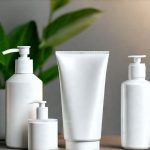Maintaining optimal urological health is a cornerstone of overall well-being for women, yet it’s often a topic shrouded in silence or discomfort. Many factors can disrupt this delicate balance, ranging from everyday hygiene practices to hormonal shifts and underlying conditions. Choosing the right cleansing products plays an unexpectedly significant role; what seems like a simple decision – a wipe versus washing – can profoundly impact comfort, pH balance, and even susceptibility to irritation or infection. This article aims to provide a comprehensive guide to navigating the world of wipes designed for sensitive female urological care, focusing on understanding ingredients, identifying needs, and making informed choices that promote gentle, effective hygiene.
The female urogenital area possesses a unique ecosystem, highly susceptible to disruption by harsh chemicals, fragrances, or overly aggressive cleansing. The vaginal pH, typically between 3.8 and 4.5, is crucial for maintaining a healthy balance of beneficial bacteria (lactobacilli) which naturally protect against harmful microbes. Disrupting this delicate acidity can lead to bacterial vaginosis, yeast infections, or other uncomfortable conditions. Therefore, selecting wipes formulated specifically for sensitive areas – avoiding those containing alcohol, parabens, sulfates, and strong fragrances – is paramount. It’s also important to remember that wipes are best used as a supplemental cleansing method, not a replacement for thorough washing with water, especially during menstruation or after physical activity. Understanding how whole-food-based nutrition supports overall health can further contribute to urological wellness.
Understanding Wipe Formulations & Key Ingredients
The market is saturated with wipe options, making it challenging to discern which products truly cater to sensitive urological needs. A deep dive into ingredient lists is essential. Look beyond marketing claims and focus on what’s actually in the wipes. Many “fragrance-free” wipes still contain masking fragrances designed to neutralize odors, potentially causing irritation. Similarly, terms like “natural” aren’t regulated and can be misleading – a product labeled natural may still include problematic ingredients.
A truly sensitive wipe will prioritize gentle cleansing agents and soothing components. Key beneficial ingredients to look for include: – Aloe vera: Known for its calming and moisturizing properties. – Vitamin E: An antioxidant that supports skin health. – Hyaluronic acid: A powerful humectant that attracts and retains moisture. – Glycerin: A hydrating ingredient that helps maintain the skin’s natural barrier function. Conversely, ingredients to avoid include: – Alcohol: Can be excessively drying and irritating. – Parabens: Potential endocrine disruptors. – Sulfates (SLS/SLES): Harsh cleansing agents that can strip away natural oils. – Fragrances (even “natural” ones): Common irritants for sensitive skin.
Beyond the core ingredients, consider the wipe’s material. Options range from traditional woven fabrics to softer, more absorbent materials like bamboo or cotton. Woven wipes may be less gentle on delicate tissues, while plant-based options often provide a superior level of comfort and are more environmentally friendly. Ultimately, the best formulation will depend on individual sensitivity levels and specific needs. It’s always advisable to test a small area first before widespread use. For women experiencing frequent issues, exploring urological inflammation may provide valuable insight.
Addressing Specific Urological Concerns with Wipes
Different women experience different urological sensitivities and concerns. What works well for one person might not be ideal for another. For instance, individuals prone to recurrent yeast infections should seek wipes formulated with prebiotics or postbiotics – ingredients that support the growth of beneficial bacteria and help maintain a healthy vaginal pH. Those with particularly sensitive skin may benefit from hypoallergenic wipes specifically designed for eczema-prone individuals.
Women experiencing urinary incontinence might find flushable wipes containing odor-neutralizing agents helpful, but it’s crucial to prioritize gentle formulations that won’t exacerbate irritation. Never use wipes intended for fecal cleansing in the urogenital area; these often contain harsh chemicals and fragrances inappropriate for sensitive tissues. Postpartum women also require extra attention to hygiene and may find perineal wipes specifically designed for postpartum care particularly soothing, as they typically incorporate ingredients like witch hazel or calendula known for their healing properties. Incorporating best daily habits can also significantly impact bladder health.
It’s important to remember that wipes are a tool – one component of a broader hygiene routine. Regular washing with water remains the gold standard, especially after bowel movements or sexual activity. Wipes can provide convenient on-the-go cleansing or supplementary care when washing isn’t immediately accessible.
Choosing Flushable vs. Non-Flushable Wipes
The debate surrounding flushable wipes is ongoing and complex. While many products are marketed as “flushable,” their ability to break down in sewer systems varies significantly. Even those labeled flushable can contribute to clogs and environmental issues, particularly in older or compromised plumbing infrastructure. It’s generally advisable to avoid flushing any type of wipe, regardless of its labeling.
Instead, dispose of all wipes – both flushable and non-flushable – appropriately in a waste bin. If you’re considering using flushable wipes for convenience, research the specific brand’s biodegradability claims and assess your local sewer system’s capacity. Look for wipes certified by organizations that evaluate their flushability and environmental impact. Non-flushable wipes are often thicker and more durable, making them a better choice for thorough cleansing but requiring proper disposal.
Patch Testing & Identifying Personal Sensitivities
Before incorporating any new wipe into your routine, always perform a patch test. This simple step can prevent significant irritation or discomfort. Apply a small amount of the wipe’s solution to a discreet area of skin – such as the inner arm – and monitor for any adverse reactions over 24-48 hours. Look for signs of redness, itching, burning, or swelling.
If you experience any sensitivity, discontinue use immediately and explore alternative options. Common sensitivities include fragrances, alcohol, and certain preservatives. If you have a history of allergic reactions, consult with a dermatologist or healthcare provider before introducing new products into your routine. Maintaining a detailed log of what works and doesn’t work for your skin can also be incredibly helpful in navigating the vast array of available wipes.
Integrating Wipes into Your Overall Hygiene Routine
Wipes should complement, not replace, established hygiene practices. Here’s a step-by-step approach to integrating them effectively: 1. Prioritize washing with water: This remains the most effective method for cleansing the urogenital area. Use lukewarm water and avoid harsh soaps or douches. 2. Use wipes as a supplemental cleanse: Wipes are ideal for on-the-go hygiene, after exercise, during menstruation, or when access to running water is limited. 3. Gently pat dry: Avoid vigorous rubbing, which can irritate sensitive tissues. Use a soft towel and gently pat the area dry. 4. Consider probiotic supplementation: Supporting your gut microbiome with probiotics may also contribute to vaginal health by promoting a balanced bacterial flora. 5. Monitor for any signs of irritation: If you experience redness, itching, burning, or unusual discharge, consult with a healthcare provider.
Remember that urological health is deeply personal and requires individualized attention. There’s no one-size-fits-all solution; the key is to understand your own body, identify your specific needs, and choose products formulated with gentle, non-irritating ingredients. By prioritizing informed choices and consistent hygiene practices, you can promote comfort, confidence, and overall well-being. For additional support, consider exploring best teas for urological soothing.





















